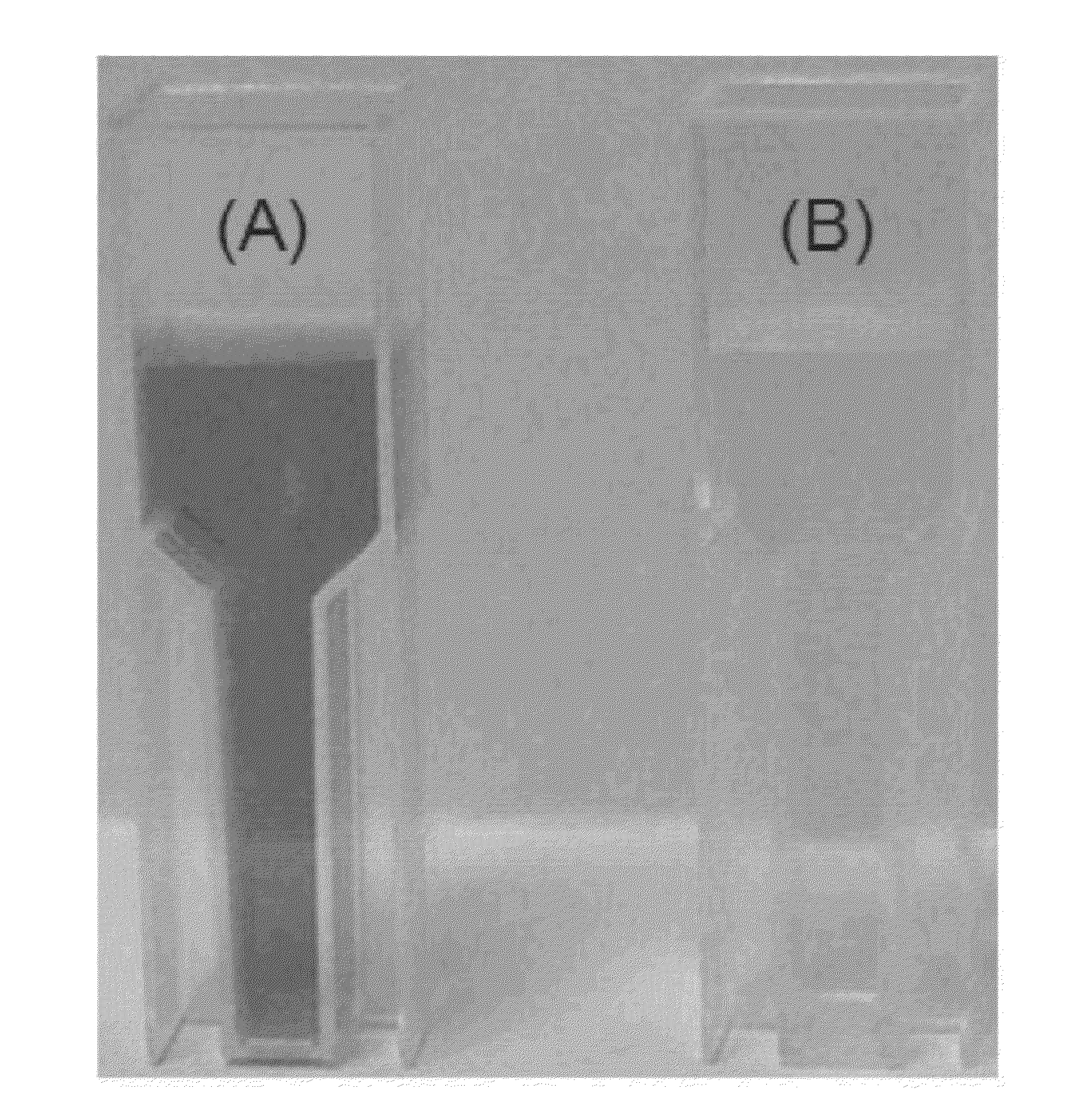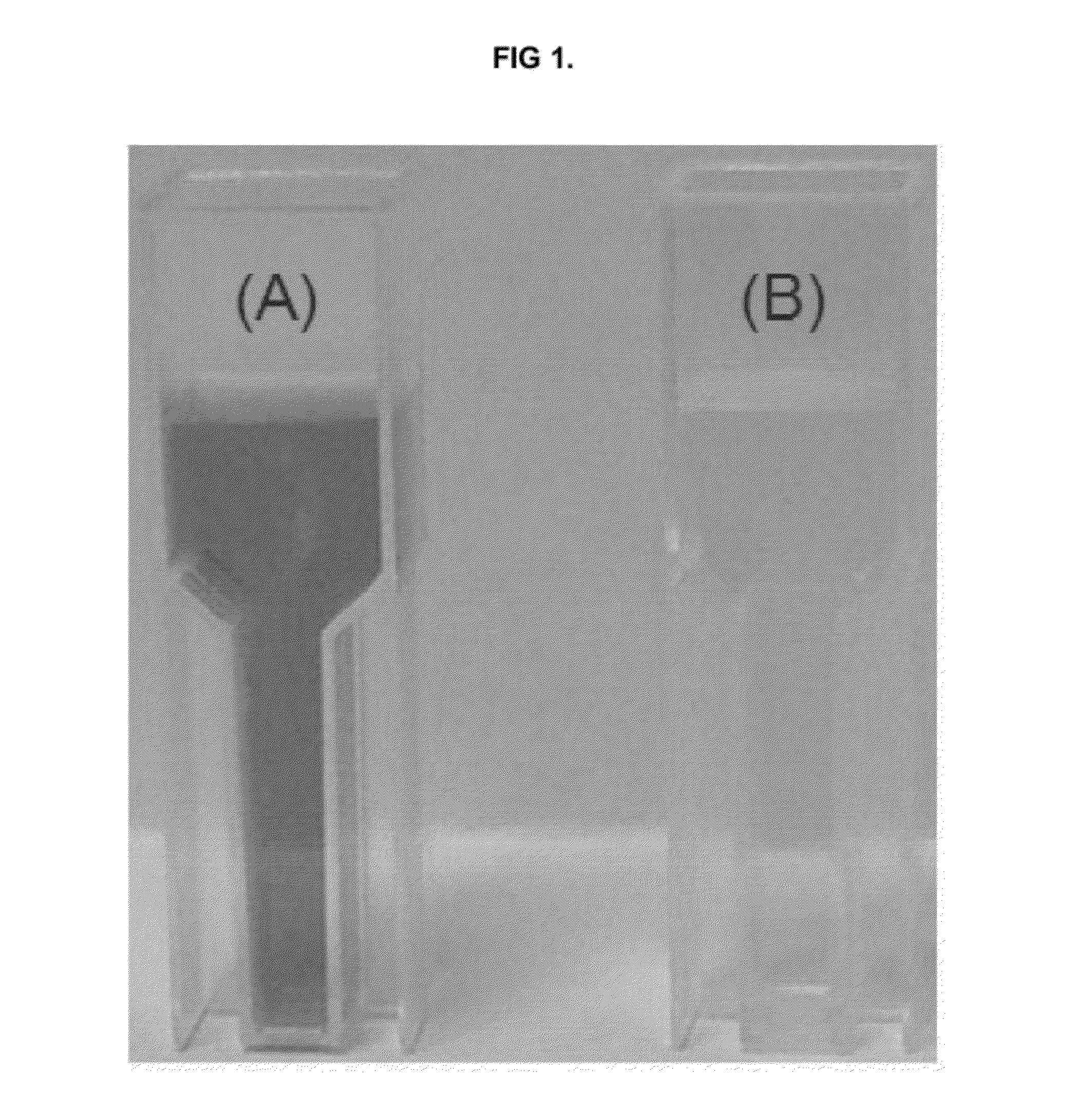Method and apparatus for enhanced photocatalytic oxidative decolorization of wastewater containing reactive anthraquinone dye
- Summary
- Abstract
- Description
- Claims
- Application Information
AI Technical Summary
Benefits of technology
Problems solved by technology
Method used
Image
Examples
example 1
Decolorization of Reactive Anthraquinone Dye-Containing Wastewater Through Photocatalytic Oxidation Under Different Salt Concentrations
[0030]A wastewater sample containing 150 mg / L of a reactive anthraquinone dye, Reactive Blue 4 (RB4) is introduced to a photocatalytic oxidation unit (500 mL) together with a photocatalyst. Then, the wastewater sample and the photocatalyst are agitated at a temperature of 25° C. in order to mix them completely. The photocatalyst used herein is titanium dioxide (TiO2) and is maintained at a concentration of 1 g / L. After that, UV is irradiated to the photocatalytic oxidation unit by using a UV-C lamp maintained at a power of 36 W.
[0031]Particularly, UV irradiation is carried out under a salt concentration of 0, 25, 50 and 100 g / L in the wastewater sample to investigate photocatalytic oxidation degrees, i.e., decolorization efficiencies as a function of salt concentrations. The salt concentration is controlled by using NaCl and each wastewater sample ha...
example 2
Decolorization of Reactive Anthraquinone Dye-Containing Wastewater Through Oxidation Under Different pH Conditions
[0035]A test is carried out under the same conditions as described in Example 1, except that no salt is introduced to the wastewater sample, and 1N HCl and NaOH are used to adjust pH of the wastewater sample to 4, 7, 10 and 12. In this manner, decolorization efficiencies in reactive anthraquinone dye-containing wastewater are investigated as a function of pH conditions. Each sample is subjected to reaction for 2 hours. For reference, introduction of alkaline materials for the adjustment of pH may be carried out through an alkaline material supplying unit.
[0036]Table 2 shows decolorization efficiencies in reactive anthraquinone dye-containing wastewater through photocatalytic oxidation under different pH conditions. In the same manner as Example 1, the decolorization efficiency of each wastewater sample under a different pH condition is calculated by measuring the initial...
example 3
Decolorization of Reactive Anthraquinone Dye-Containing Wastewater Through Photocatalytic Oxidation Under High Salt Concentration / Different pH Conditions
[0038]A test is carried out under the same conditions as described in Examples 1 and 2, except that a salt is introduced into the wastewater sample while adjusting pH of the wastewater sample to a different level. Particularly, 100 g / L of NaCl is introduced into each wastewater sample and each wastewater sample is adjusted to a pH of 4, 7, 10 or 12, and then decolorization efficiency is determined at a high salt concentration under a different pH condition. Each wastewater sample is subjected to reaction for 2 hours.
[0039]Table 3 shows decolorization efficiencies in reactive anthraquinone dye-containing wastewater through photocatalytic oxidation in the presence of a high concentration of salt (100 g NaCl / L) under different pH conditions. In the same manner as Examples 1 and 2, the decolorization efficiency of each wastewater sample...
PUM
 Login to View More
Login to View More Abstract
Description
Claims
Application Information
 Login to View More
Login to View More - R&D
- Intellectual Property
- Life Sciences
- Materials
- Tech Scout
- Unparalleled Data Quality
- Higher Quality Content
- 60% Fewer Hallucinations
Browse by: Latest US Patents, China's latest patents, Technical Efficacy Thesaurus, Application Domain, Technology Topic, Popular Technical Reports.
© 2025 PatSnap. All rights reserved.Legal|Privacy policy|Modern Slavery Act Transparency Statement|Sitemap|About US| Contact US: help@patsnap.com


